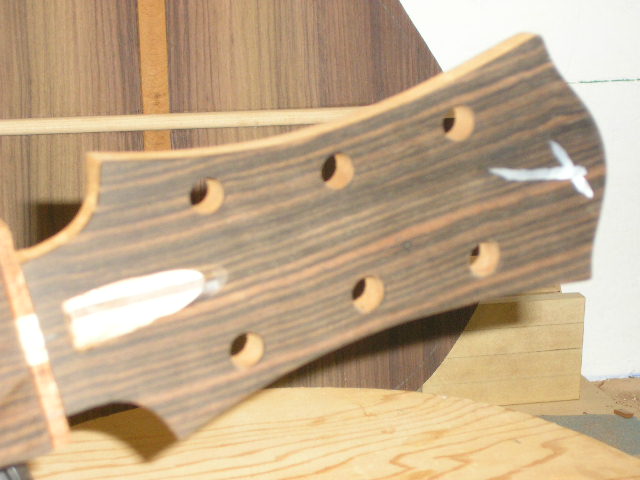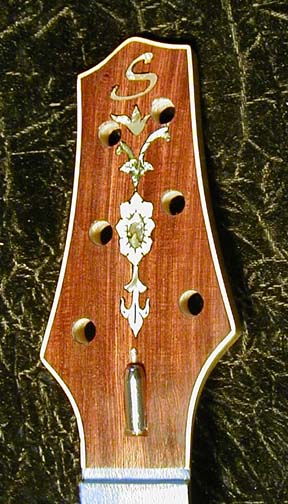Okay, here are a few shots of installation of a simple compression rod from LMI. Four necks so far and no problems, this is number five.
This 1 1/16" stop is predrilled at 3/16" the rod size. The washer is squared on the bottom and slightly on the top. Two small holes are drilled either side of the stop end to provide bearing for the washer. The stop is glued into position. Rod slot done easily on the table saw 3/8 deep by 1/4 wide.
The hook end, showing the dovetail. A 3/16 hole is drilled at the angle formed on the truss rod end, fits well on down in the shaft.
.25 inch spline gets glued in here. It's proud by an 1/8th inch and will get planed flush then sanded. Refer to the first photo and you can actually see the precut spline laying on the bench.
Headplate glueup, rosewood on Mahogany, lots of Klems on this job. Hard to beat a good cam clamp.





